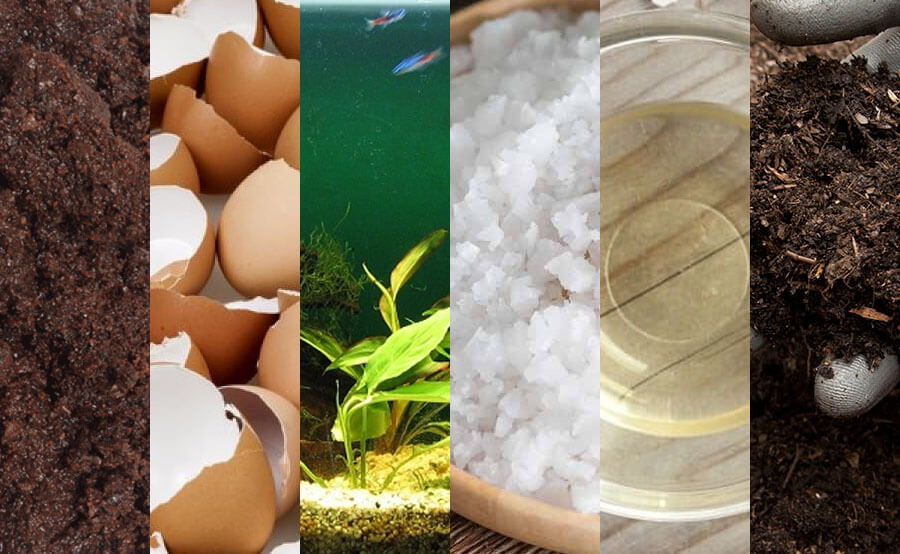Making your own organic fertilizer can be a very good way to nurture your strains with natural products, knowing their origin and reducing the economic investment.
Besides, producing your own fertilizers is easy and simple, with materials almost everybody already has at home.
Firstly, have a look at the basic elements of a good fertilizer, and the necessary trace elements for a more specific vegetative nutrition.

home fertilizer
Fertilizing formula
The main nutrients necessary for the right development of a marijuana strain are nitrogen, phosphorus, potassium or N-P-K – these nutrients are fundamental for a strong air growth, an optimum floral and root development and the general health of the plant; it’s fundamental to know these three main components to create the perfect food for its grow.
Essential nutrients for healthy Marijuana plants
Just like human being needs more than protein, fat and carb in the diet, plants can’t survive just with N-P-K – there are thirteen additional chemical elements for the health and productivity of your garden.
Apart from the basic nutrients already mentioned (N-P-K), plants need three secondary minerals. Calcium (Ca), magnesium (Mg) and sulfur (S); during photosynthesis, plants use solar light to decompose water and carbon dioxide into hydrogen (H), oxygen (O) and carbon (C). These three non-mineral nutrients become food. Boron (B), copper (Cu), iron (Fe), chloride (Cl), manganese (Mn), molybdenum (Mo) and zinc (Zn) are the necessary micro nutrients plants have to obtain from their surrounding soil.
Soil is important
Acid soil (low pH), such as high-clay soil, tends to fall short of macro nutrients (N, P, K, Ca, Mg and S), and alkaline soil (high pH) tends to contain insufficient micro nutrients (B, Cu, Fe, Cl, Mn, Mo and Zn). Garden soil with neutral pH 6-6.5 tends to contain adequate quantities of both types of nutrients necessary to keep the plans healthy – if help to measure soil quality, take a sample and analyze it.
Best materials for organic fertilizers
Some common home items can be very useful when producing quality fertilizers for your grow – next time one of these items is going to the dustbin, think your plants can need it.
Coffee grounds
Blend the used coffee grounds with ‘brown’ garden waste – dead leaves, dried straw, lawn cuttings – to add nitrogen in the soil; properly blended with neutral means, pH won’t be remarkably altered.
Eggshell
Eggshell are about 96% calcium – as a fertilizer, they help strengthen the cell structure and plant nutrient flow.

home fertilizers
Aquarium water
If you have freshwater fish as pets, don’t throw away the water next time you clean the aquarium tank; used tank water’s full of nitrogen and trace elements to improve the health of your garden – just freshwater tanks (salt water harms marijuana – almost every plant – strains).
Epsom salts
Epsom salts are salts of hydrated magnesium sulfur, with two important elements the plants need for an optimum health; magnesium plays a fundamental role during photosynthesis and it’s required by the plants for the correct development of many enzyme processes. The seeds also need magnesium to germinate. Sulfur helps the plants with several functions, including amino acid production, root growth and chlorophyll formation. For this use, mix an Epsom-salt tablespoon with a water gallon and spray it on your garden plants, like a leafy mist, once every two weeks.
Vinegar
White vinegar’s a very cheap, useful fertilizer for acid plants such as roses, hydrangeas and berries – mix one vinegar tablespoon with 5 water liters and spray it once when flowering; be very careful because, although many plants develop in an acid environment, too-low pH can be harmful.
Compost
Compost’s an excellent way to recycle waste material while feeding your garden – gradually popular among organic growers; the ingredients for a successful compost blend include:
- Air and water to keep the bacteria responsible of organic-material decomposing.
- ‘Brown’ dried material (carbon) such as dead leaves, straw and other dried garden waste.
- ‘Green’ wet material (nitrogen) such as rabbit or chicken manure, pasture and other fresh vegetative materials.
For successful compost, about 30% carbon and 40% nitrogen – it’s important to give your compost enough time to get ‘cooked’, especially with manure, so this would kill any harmful pathogen living in decomposing material; it’s also important to prevent your compost from aging too much – more time in soil, more lost nutrients from decomposing organic material.
Example of Cannabis Garden fertilized with Compost Tea
Remember to wear a pair of gloves and eye protection while producing compost or other fertilizers on this list.



Rebecca Burroughs
Thank you I appreciate the information. Bekki